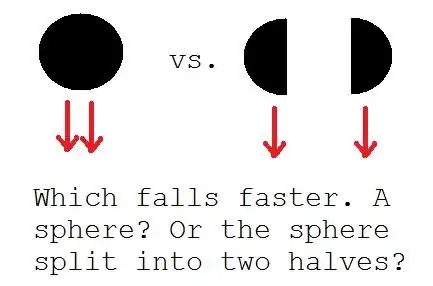I am answering this in my own way critics are welcomed.
So, Generally consider two bodies of same shape,surface area (same) but MASSES DIFFERENT.
Now if you release both the bodies from a similar height say h, with u =0m/s for both (initially rest or aka free fall) they travel h height in same time .
So,what is happening here is we know Newton's law of gravitation like F = (GMm)/R^2
Where, G is Grav.const. and M and m are masses along which gravitation (attraction only always) acts and R is the distance between the center of masses or simply centers of body (We just take point objects usually dw bout it).
Now F=[(GMē) m]/R^2 Mē= earth mass and R dist.between earth center and object
You can simplify (GMē/R^2) as g' usually when distance of object from earth surface is very less than earth radius you can take g'=g =9.8m/s^2
So,finally F=gm=mg
For two different masses This F so called gravitational force of attraction is different but look g is same for both masses that is acceleration of two bodies is same even though there is different mag.of force on them .
Mostly ppl are confused here they generally interpret this as greater the force greater the acc.n which is not right to be honest
Greater force doesn't mean greater acc.n greater force maybe because of their masses being different but with same acc.n so it is possible for two bodies of different masses experiencing different forces having same acc.n
It is more right if you put this explanation of so called g being same for two bodies rather than a1=a2=g YOU BETTER USE
a1=F1/m1 and a2=F2/m2 and then you can see that g=F1/m1=F2/m2 You will be getting a lil clarity if you do it this way .
Therefore since same acc.n it says both bodies have same change in their velocities over equal time interval so these bodies attain same final velocities over a particular time since they started with 0m/s at same time that's why they cover equal disp.during their journey down hence they reach ground in same time.
